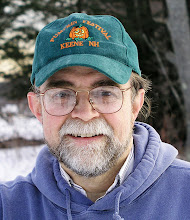 Negative space is the area around
the key element(s) of an image. When used effectively it can complement and
draw attention to the subject of the composition, which is often referred to a “Positive
Space”.
Negative space is the area around
the key element(s) of an image. When used effectively it can complement and
draw attention to the subject of the composition, which is often referred to a “Positive
Space”.  |
| Eagle's Watch |
Negative space has applications throughout many genre of art,
painting, sculpture, even music, and of course photography. It is the
process of highlighting the subject of a piece by surrounding it with areas
that are of less visual interest.
 Sometimes, this includes areas that
are essentially blank, but it may also be regions that show softer focus or
lower contrast, anything with less visual interest that might draw the eye from
the primary subject of the piece.
Sometimes, this includes areas that
are essentially blank, but it may also be regions that show softer focus or
lower contrast, anything with less visual interest that might draw the eye from
the primary subject of the piece.  All too often I tend to pack my
images, corner to corner, with as much detail as possible. I paid good
money for all those pixels, why not jam them with as much information as
possible? But it is a healthy exercise
to look for compositions in which negative space can strengthen the message of
the image.
All too often I tend to pack my
images, corner to corner, with as much detail as possible. I paid good
money for all those pixels, why not jam them with as much information as
possible? But it is a healthy exercise
to look for compositions in which negative space can strengthen the message of
the image.
Nose Space
 |
| Pavlov Island, Alaska |
My most frequent use of negative
space is when I add nose or motion room.
Nose room is the amount of open space left in
the direction of a subject’s gaze, or direction of motion. Flowers, trees and other inanimate elements
may still have a sense of direction that can also be enhanced with negative
space.
 |
| Corn Gazing Left |
 |
| Flower Gazing Left |
 |
| Rule of Thirds |
Negative
space may also strengthen a subject and draw the eye by surrounding it with areas
of lower interest or it can allow the positive space to be moved away from the “dead”
center of the frame to a visually stronger location, such as at the
intersection of the lines of the rule of thirds.
 |
| Not Purely Negative Space, but It all works to draw the eye and tell the story |
 |
| Frigate Silhouette, Galapagos Islands |
There
are many uses for negative space, and the best way to understand the power of
nothingness is to study a few examples and then look for opportunities in your
own shooting. The important thing is to
understand that your frame does not need to be filled with detail, corner to
corner. Visual impact can be enhanced by
simplifying with a little negative space.
Jeffrey Newcomer
www.partridgebrookreflections.com


No comments:
Post a Comment